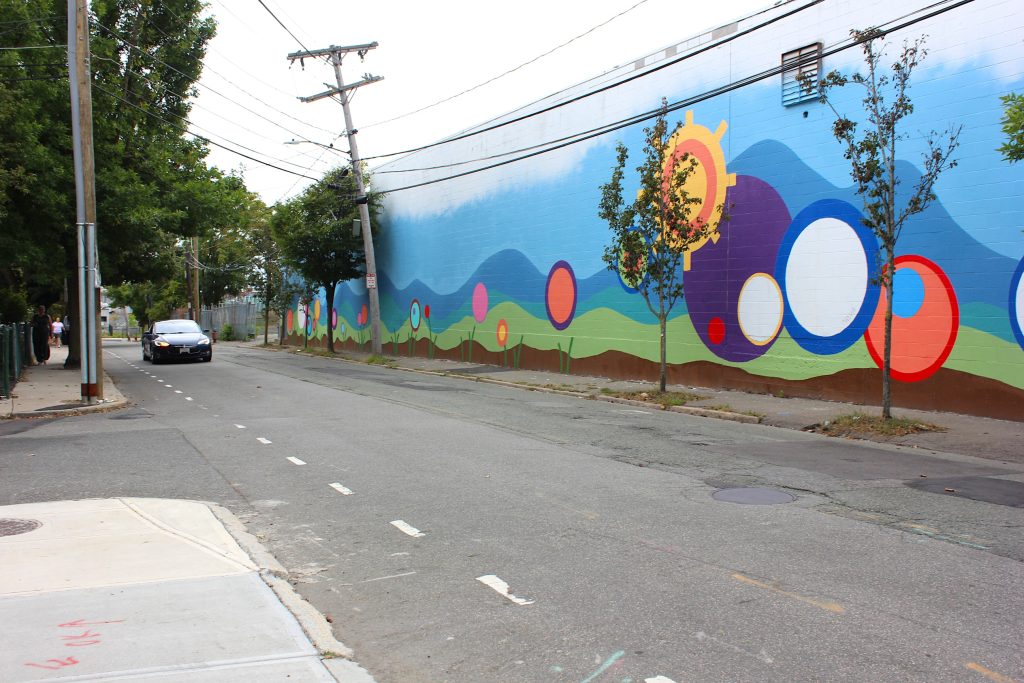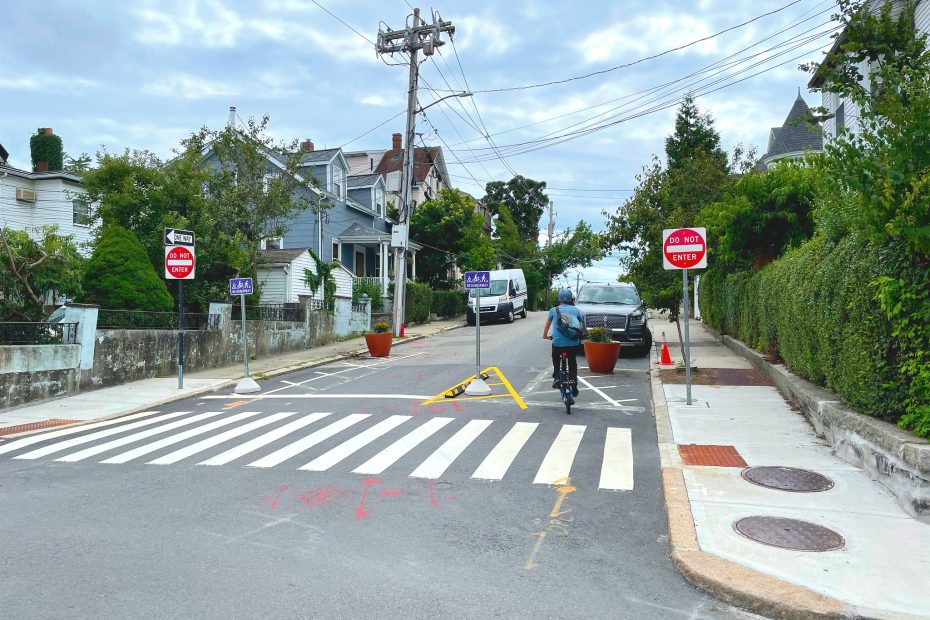September 2024–Present
Glen and Otis Streets, East Somerville, MA
Over 15 months, CultureHouse and Neighborways Design worked collaboratively with the City of Somerville and the East Somerville community to rethink the process of creating quick-build Neighborways (slow neighborhood streets that are safe to bike, walk, and roll on)—from engagement through design and construction. In the end, our approach resulted in a project that delivered safer streets to East Somerville in a community-centered way and piloted a template for the process, design, and brand for future Neighborways in Somerville.
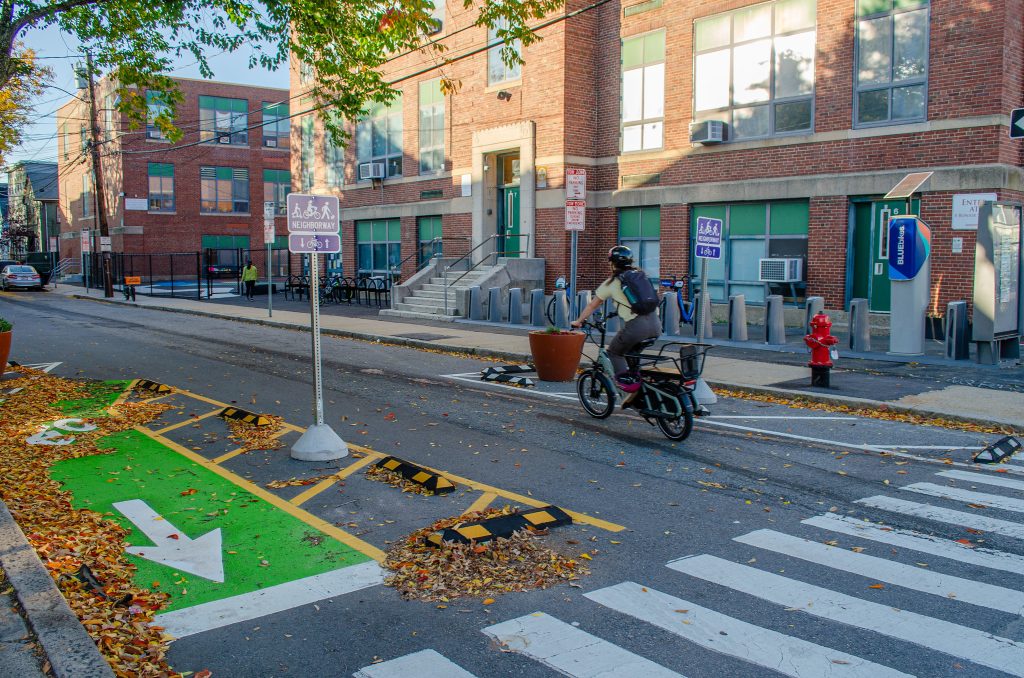
The goals for this project were to create streets that allow for contraflow biking (traveling against traffic on a one-way street), are safe for people of all ages and abilities walking, rolling, and biking, and connect schools, homes, businesses, and popular destinations.
Engagement
Strategy
We began the East Somerville Neighborways project by rethinking the typical street design engagement approach. Given that redesigning streets can be a sensitive topic, we wanted to take an approach that centered around giving clear information and listening carefully to resident concerns. To guide our work, we came up with goals to: hear concerns from systematically marginalized communities on street safety, use resident feedback to inform design, and spread clear information to get ahead of confusion.
To achieve our engagement goals, we focused on direct connection and meeting people where they were by getting feedback at front doors, neighborhood events, and local institutions.
Block party
Rather than traditional meetings, we held two community events; a cider social and a block party (complete with a seesaw and snacks!) to hear from residents and share designs. During both of these events, we had posters up with the design ideas and offered multiple ways to give feedback—through voting stickers, conversations, and other interactive methods.
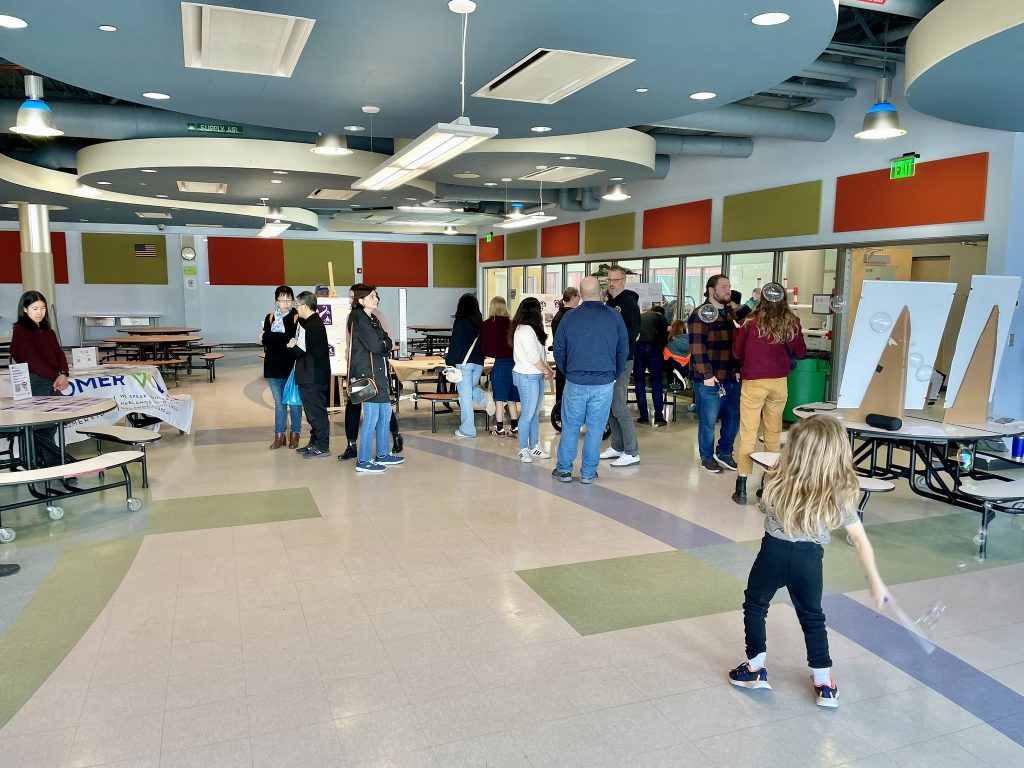
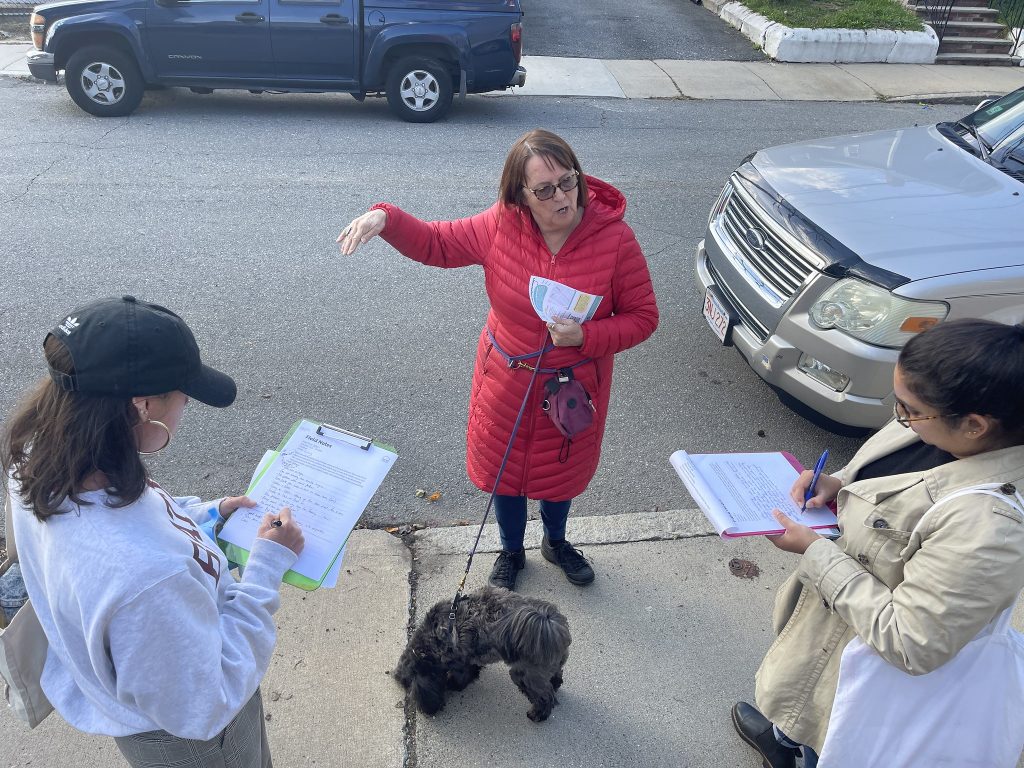
Design
Gateways and mid-block interventions
In order to make contraflow biking more comfortable and slow down drivers, we used paint, curbs, and signs to adjust the geometry of gateways (major roadway entrances/exits). For one-way streets, we included contraflow entrances/exits and a small, narrow chicane in the travel lane to slow vehicles. This small shift also created more room for bikers riding contraflow to pass oncoming traffic.
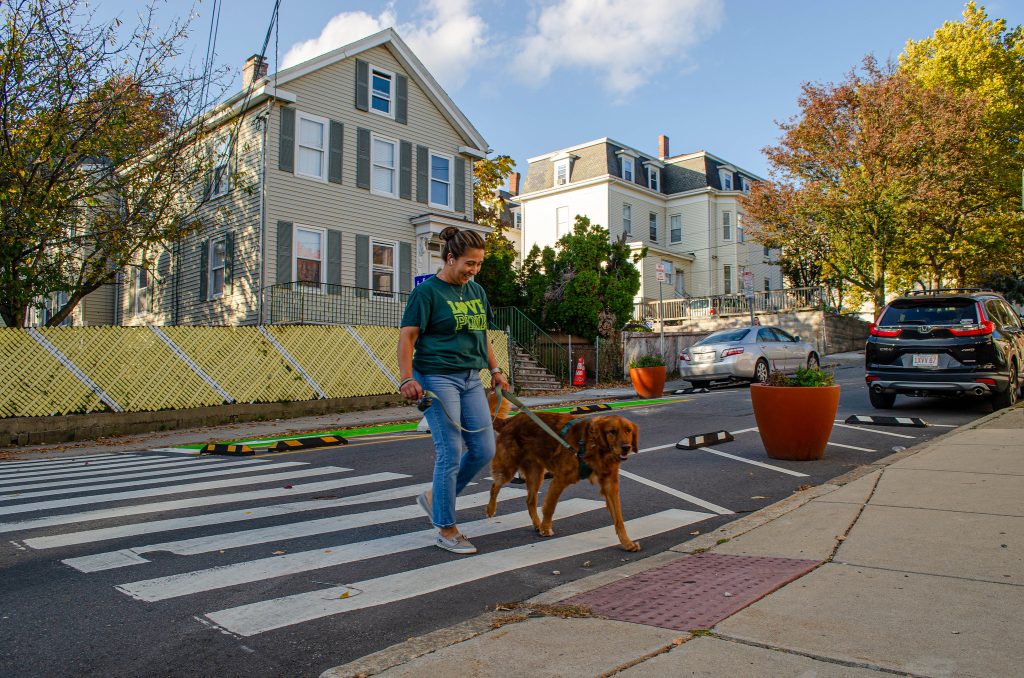
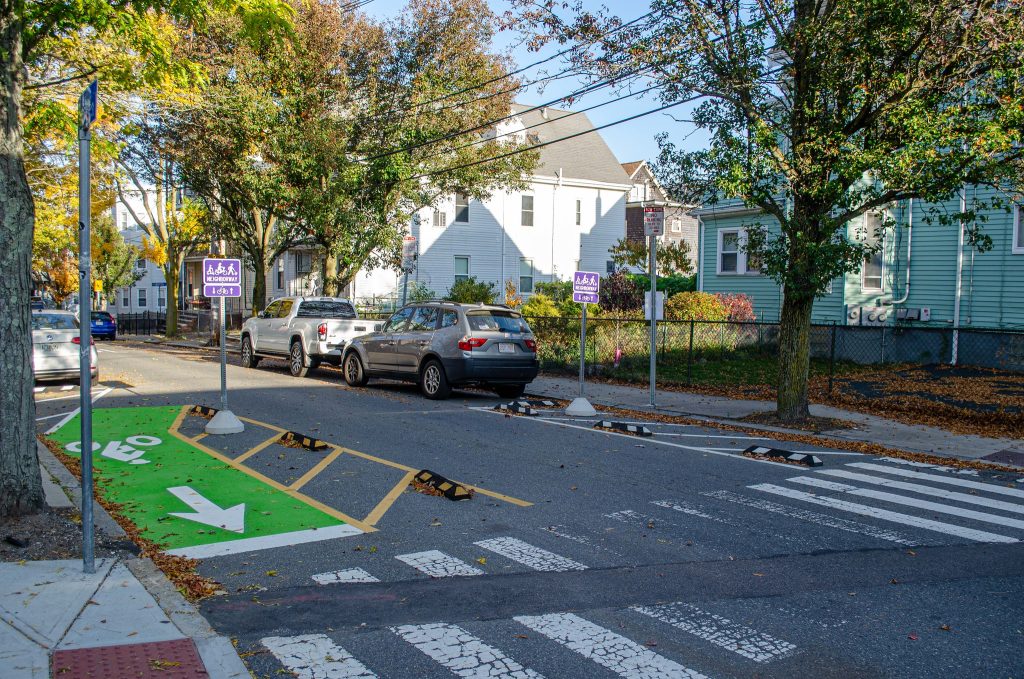
We heard a consistent desire for more greenery during our community engagement process. To meet this need, we included planters at a few gateway locations. Aligning with a City goal to increase pollinator plants, we included plants known to support pollinators, and selected native varieties when possible. Because of limited capacity from City staff, we only installed planters in locations where we had residents who volunteered to take care of them.
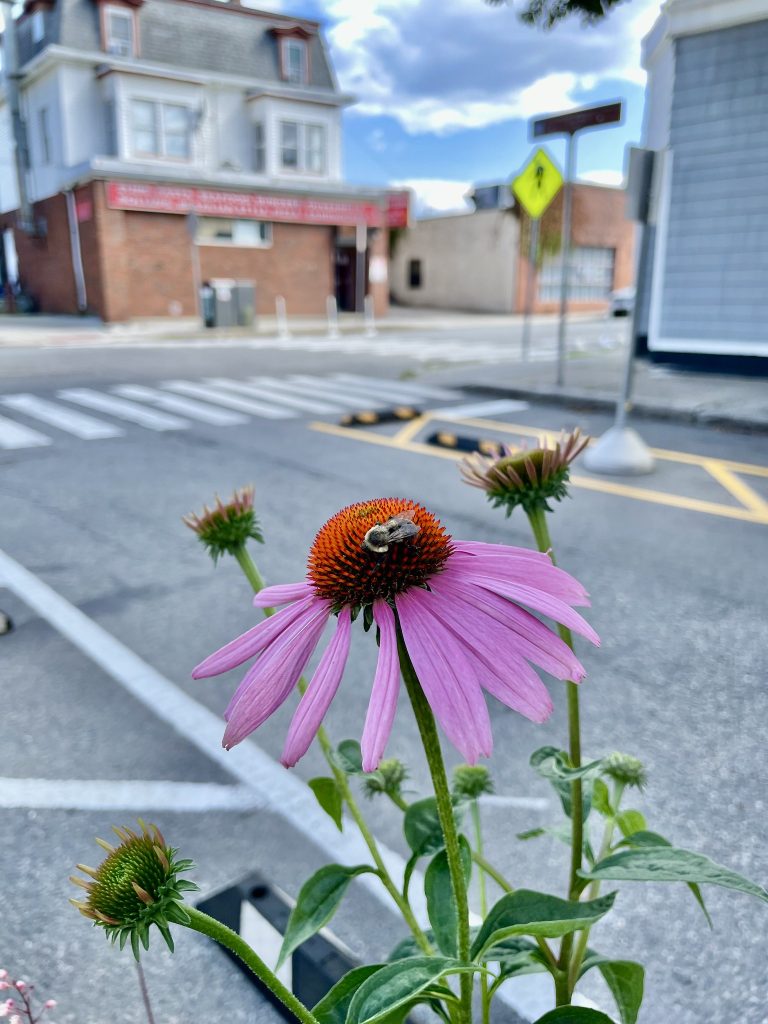
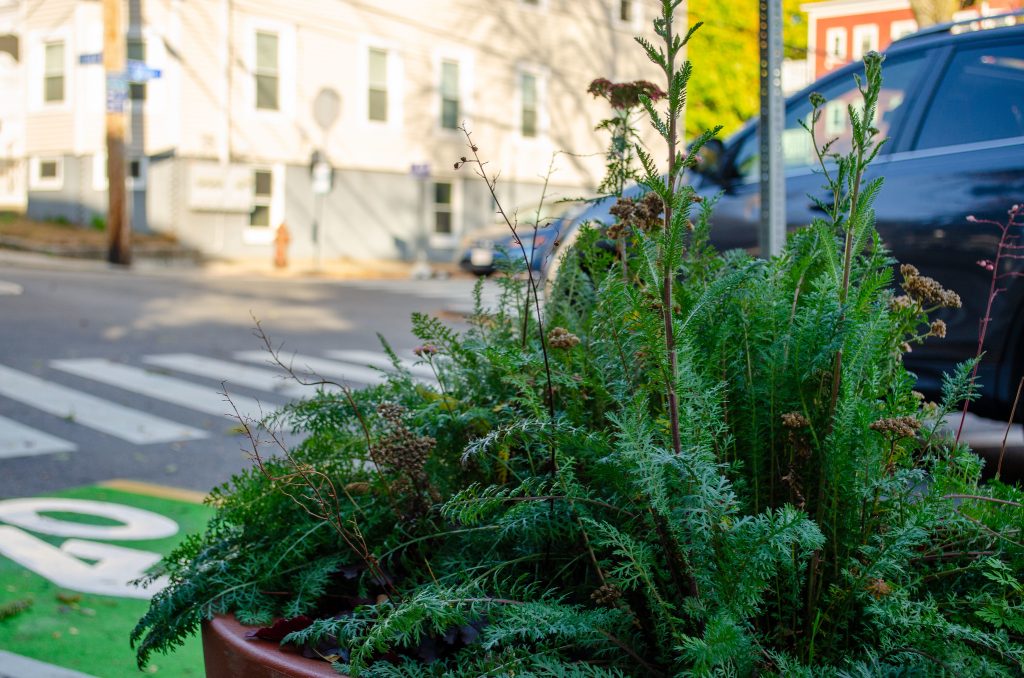
We also installed markings throughout the street encouraging two-way biking and worked with the city to put in speed humps and clear corners to further slow down traffic. Additionally, we created a new brand to be used for Neighborways across the city, using purple across the design to get people to associate the color with slow neighborhood streets.
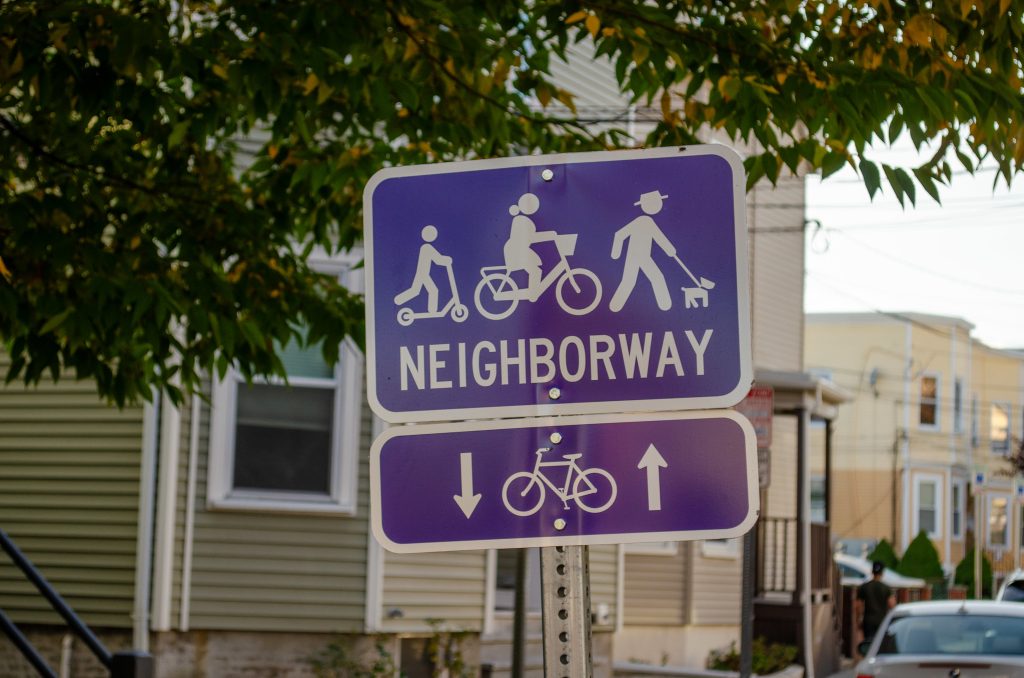

Public art
Neighborways Design worked with community members to design two murals in the project area—one on the side of the East Somerville Community School and one on the wall of a building on Tufts Street, at the end of Glen Street. These murals were well-received by the community and brought more color and life to the streets.
